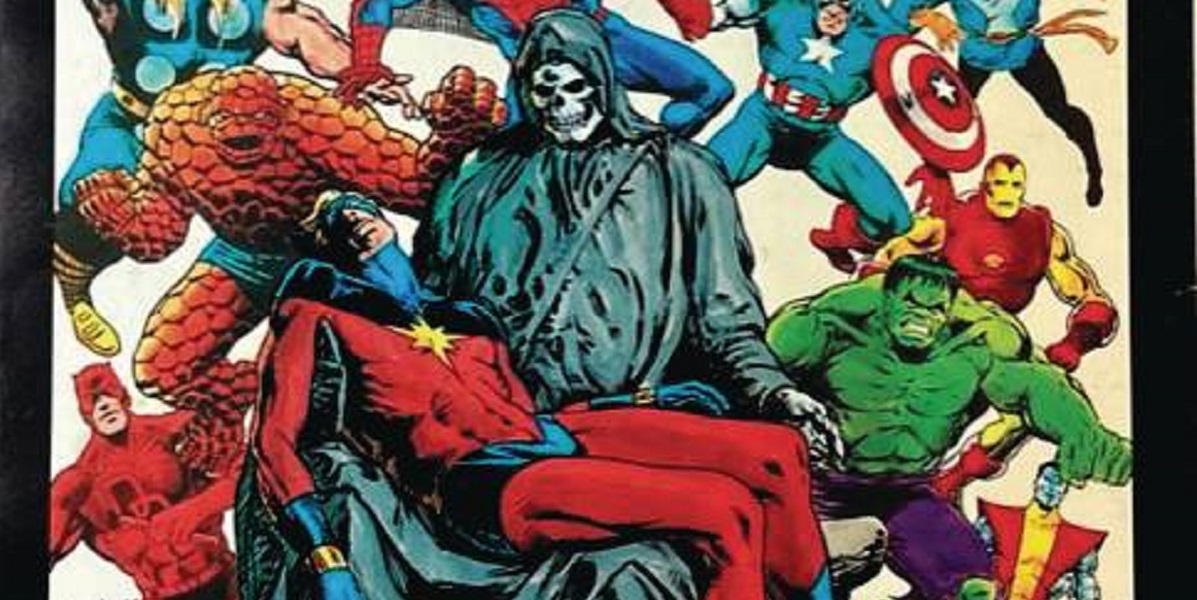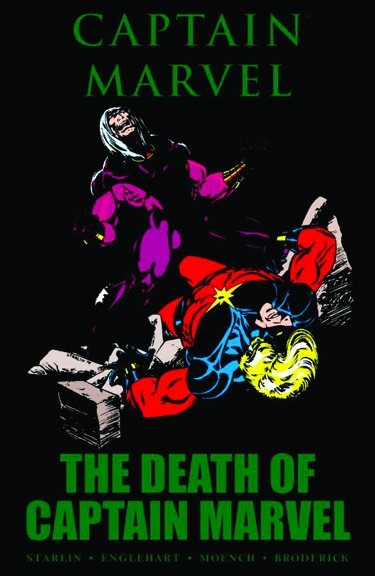Death is rarely the end in comics.
Many times it’s not even a resting point. Characters die and come back regularly enough that it’s been turned into a plot point for major company-wide events and more recently turned into a quirk for mutant society. Although some writers may still try for it, it’s not even really a shock any more. Even characters whose deaths were considered sacrosanct and irreversible, like Bucky Barnes and Jason Todd, have been resurrected.
Except really for one, Captain Marvel.
“I can’t punch, kick, or fly away to escape this cancer. It just doesn’t work that way.”
Marvel Graphic Novel #1 – The Death of Captain Marvel by Jim Starlin, Steve Oliff, and James Novak took the cosmic hero with the company’s namesake, had him narrate his autobiography, say a few goodbyes to his friends, and then sail on into that good night. Mar-Vell succumbed to cancer.
It always kind of fascinated me that to much of my generation of comics readers, in the early days at least, Captain Marvel was gone before we even really got into reading comics. The hero of the Kree/Skrull War wasn’t really a prominent part of our comics reading experience. Even in big events like The Infinity Gauntlet and the subsequent Adam Warlock and the Infinity Watch series, the characters around Captain Marvel came back, but Mar-Vell himself remained dead. Acting as an inspiration for other characters.
I’m speculating here, but I think it may be because of how he died. There was no heroic sacrifice. He wasn’t in battle with a nefarious enemy, mostly. No sneak attack from the Skrulls. It was a normal, ordinary death. Having Captain Marvel die from a very real disease reinforces both not taking life for granted and the gravity of something like cancer. It’s used in a fashion that it can strike at anyone, even superheroes. And to undo that later would kind of cheapen the impact.
“We die from bullets and bombs…not from something like cancer. It just can’t be.”
While I think that Starlin’s artwork in the early period of Dreadstar is unparalleled, his work on The Death of Captain Marvel is still at the very peak of his contributions to the medium. The story is dense. In both the breadth of narrative being told across Mar-Vell’s history and in the weight of the context. Starlin delivers very packed pages with tiers of text and panels. During much of the opening sequences, James Novak definitely has his work cut out for him as he spaces out the narration and dialogue.
Starlin’s detailed artwork, expressive faces, and feel for the flow of action make it pass without feeling crowded or cramped. As well as giving us some beautiful quiet moments, like when Mar-Vell tells his lover his terminal diagnosis. Steve Oliff enhances everything with beautiful primary colour choices, bolstering the larger than life superheroics with some muted tones during the more serious moments.
Although there have been a couple of feints at returning Mar-Vell to land of the living, once through a Skrull and once through an alternate reality evil version, his death remains a keystone in the Marvel Universe history. In The Death of Captain Marvel, Starlin, Oliff, and Novak gave a final tribute to the cosmic hero and cemented a legacy for what would come across decades. It’s fascinating to see a death that really was final.
Classic Comic Compendium – The Death of Captain Marvel
Marvel Graphic Novel #1 – The Death of Captain Marvel
Writer & Artist: Jim Starlin
Colourist: Steve Oliff
Letterer: James Novak
Publisher: Marvel Comics
Release Date: January 12 1982
Available collected in The Death of Captain Marvel and Captain Marvel by Jim Starlin: The Complete Collection
Read past entries in the Classic Comic Compendium!










